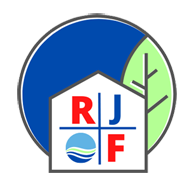This is a question we have been asked over and over again these past few weeks.
Bleach is a biocides that can destroy living organisms such as mold (chlorine bleach, for example) but not recommended as a routine practice during mold cleanup. In most cases, it is not possible or desirable to sterilize an area; a background level of mold spores will always remain.
There may be instances, however, when professional judgment may indicate its use (for example, when immune-compromised individuals are present).
If you choose to use disinfectants or biocides, always ventilate the area and exhaust the air to the outdoors. Never mix chlorine bleach solution with other cleaning solutions or detergents that contain ammonia because toxic fumes could be produced.
First, if there is visible mold on hard surfaces such as walls, floorboards and window sills, scrub the mold off with detergent and water and make sure you dry completely.
But absorbent and porous materials like ceiling tiles and carpets may have to be discarded if there is visible mold on any of there surfaces. Mold grows in crevices of porous materials making it difficult or almost impossible to clean and remove the mold completely.
Please note: Dead mold may still cause allergic reactions in some people, so it is not enough to simply kill the mold, it must also be removed.

